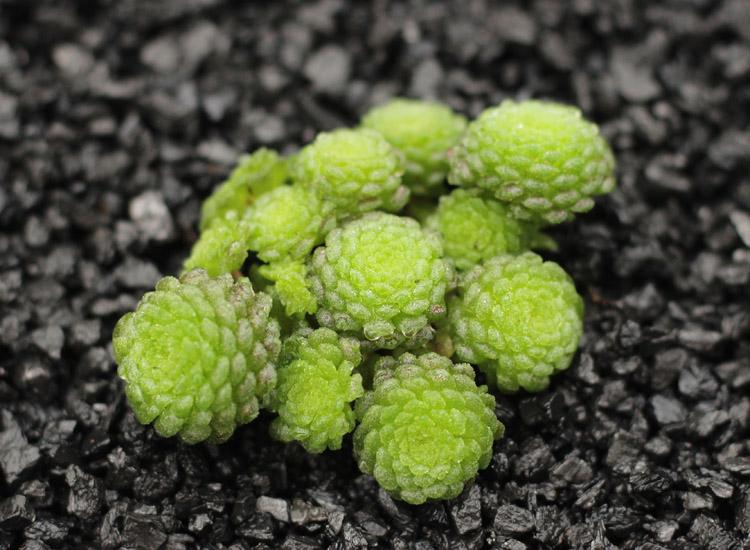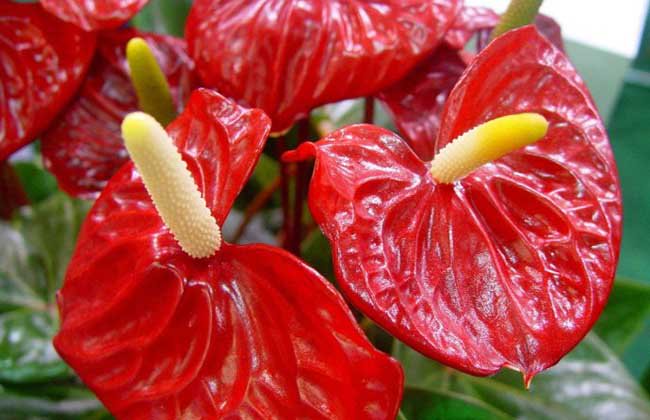The breeding methods of longevity flowers mean good-good reproduction!
Christmas cabbage (scientific name: Kalanchoe blossfeldiana Poelln.): also known as "longevity flower". Perennial fleshy herbs. The plant height is 10-30 cm. The stem is erect. Leaves simple opposite, elliptic, margin obtusely dentate. Cymes; florets orange-red to crimson. The fruit is fruitful. There are many seeds. The florescence is from February to May.
The leaves are dense and green, blooming near the Christmas festival, clustered in clusters, rich in colors, and are beloved indoor potted flowers. The flower was introduced to Europe from southern Africa by the German R.Blossfeld. But it was not widely cultivated and ornamental in Europe until the 1930s. Up to now, the output value of longevity flowers in the Netherlands, a big flower exporter in the world, reached 333 billion US dollars in 1995, ranking third in potted flower production. In Denmark, potted longevity flowers have become the top pot flowers in Denmark, and their output and output value are in the first place. It shows that longevity flower plays an important role in potted flowers and has become one of the fastest growing potted flowers in the international flower market.

Culture method of longevity flower
1. Growth temperature
The most suitable temperature for longevity flower growth is 15 ℃ to 25 ℃, higher than 30 ℃, growth retardation, semi-dormancy, growth stagnation below 10 ℃, redness of leaf color below 8 ℃, delayed florescence, and easy to freeze to death below 0 ℃. Therefore, in order to raise longevity flowers, it is necessary to create a small environment that is warm in winter and cool in summer. At noon in midsummer, you should avoid strong light exposure and place it in a semi-shady place with sufficient scattered light, such as under big trees, under eaves or north balconies, and pay special attention to ventilation and cooling. You can sprinkle water on the ground nearby, but not on the plants.
2. Plenty of sunshine
Longevity flowers like a sunny environment, except for a little shade at noon in midsummer, the rest of the time should be placed in the sun, at least 4 hours of direct light can be seen every day in order to grow healthily. The balcony of the building should rotate the flowerpot 180 degrees every half month to make it receive light evenly, avoid partial crown and reduce the ornamental value. Although the semi-shade can also grow, but the stem thin leaves thin flowers less light, far less luxuriant than the sunny place. If the shade is not only easy to lose leaves and no flowers, even if the flowering plants are placed in the shade, the flower color will become dim, and then the flowers will fall off and wither.
3. Water is suitable.
Longevity flower is a succulent plant, which contains more water, so it is more resistant to drought and afraid of waterlogging, and grows well under the condition of dry air in high-rise buildings. About 3 days in spring and autumn, you can see that the basin soil is dry and watered once, often keep a little moist. It is advisable to water less in summer, and it is better to water once every 5 to 7 days. The longevity flowers should be placed outdoors. In the rainy season, the water is prone to rot, roots, leaves and even death. If you properly control the water basin, the soil will be dry and wet, then there will be more branches and leaves and flowers. After entering the room in winter, it is appropriate to use water similar to room temperature at noon, about once a week.
4. Adequate fertilizer
Longevity flowers like fertilizer, and the seedlings can be planted in pot for half a month or the old plants can be divided into two or three times to promote the growth of stems and leaves, and nitrogen-based liquid fertilizer can be applied once after anthesis to promote its rejuvenation. In the rest of the time, except for stopping application in summer, we can only apply nitrogen, phosphorus and potassium compound fertilizer, do not put fertilizer on the leaves, otherwise the leaves are easy to rot, such as accidentally dirty leaves, rinse off with water. The flowering period of longevity flowers is long, so it is necessary to break the commandment of not applying fertilizer during the flowering period, and apply thin nitrogen, phosphorus and potassium fertilizer or 0.2% potassium dihydrogen phosphate solution once a month, so that the later flowers will not become small and pale due to lack of fertilizer.
5. Beware of diseases and insect pests
With the improvement of the mildness of the environment, longevity flowers are very vulnerable to diseases and insect pests. Pay attention to keep indoor ventilation and prevent diseases and insect pests from entering the room. At the same time, some pesticides should be mainly used to prevent the infection of diseases and insect pests. The main diseases are downy mildew and anthracnose.
6. Sandy soil should be loose.
Longevity flowers grow best when planted in clay pots with good permeability, but they are not beautiful indoors. They can be covered with plastic pots or porcelain pots, or they can be planted directly in small purple sand pots or plastic pots. When planting, put a layer of broken charcoal block or broken hard plastic foam block at the bottom of the basin to enhance its permeability. There are 3 to 6 species in a basin with an inner diameter of 10 cm to 20 cm. Although it is not very selective, it is easy to rot roots in heavy clay, and grows best in loose and fertile slightly acidic sandy loam. Family potted plants should be mixed with rotten leaf soil and vegetable garden topsoil, and then add 5% to 8% sand as culture soil.
7. Suitable for pruning
In the early stage of exuberant growth of longevity flowers, we should pay attention to heart-picking, promote branching and make potted flowers grow fuller; cut off the residual flowers in time after the flowers are shedding, so as not to consume nutrients and affect the number of the next flowering.
Longevity flower is a kind of plant with strong vitality, that is to say, it is easy to survive. He has two cutting methods. One is wood cutting, the other is leaf cutting.
Time: 2019-04-22 Click:
- Prev

What kinds of hanging orchids do you have? how to maintain them?
Hanging orchid (scientific name: Chlorophytumcomosum (Thunb.) Baker.), also known as: hanging pot grass, hanging orchid, fishing orchid, bluegrass, folding crane orchid, Western Europe, also known as spider grass or aircraft grass, native to South Africa
- Next

Anthurium andraeanum-the most detailed maintenance experience of Anthurium andraeanum
Anthurium generally refers to AnthuriumandraeanumLinden (ornamental plant of Araceae) AnthuriumandraeanumLinden, perennial evergreen herb of Araceae. Stem nodes short; leaves arising from base, green, leathery, entire, oblong-cordate or ovoid. Petiole slender
Related
- Fuxing push coffee new agricultural production and marketing class: lack of small-scale processing plants
- Jujube rice field leisure farm deep ploughing Yilan for five years to create a space for organic food and play
- Nongyu Farm-A trial of organic papaya for brave women with advanced technology
- Four points for attention in the prevention and control of diseases and insect pests of edible fungi
- How to add nutrient solution to Edible Fungi
- Is there any good way to control edible fungus mites?
- Open Inoculation Technology of Edible Fungi
- Is there any clever way to use fertilizer for edible fungus in winter?
- What agents are used to kill the pathogens of edible fungi in the mushroom shed?
- Rapid drying of Edible Fungi

